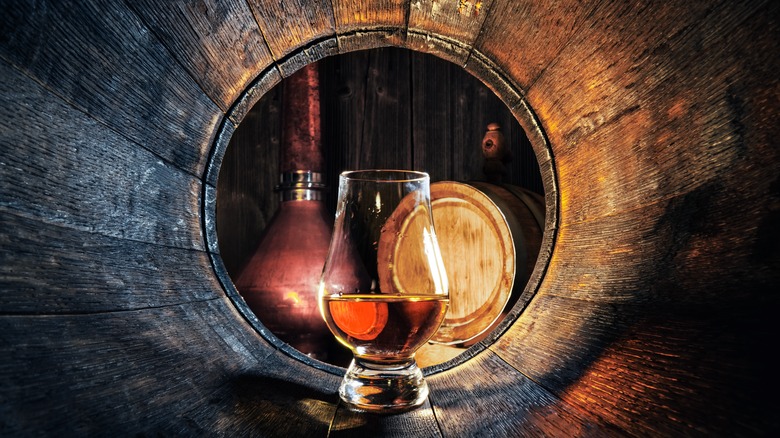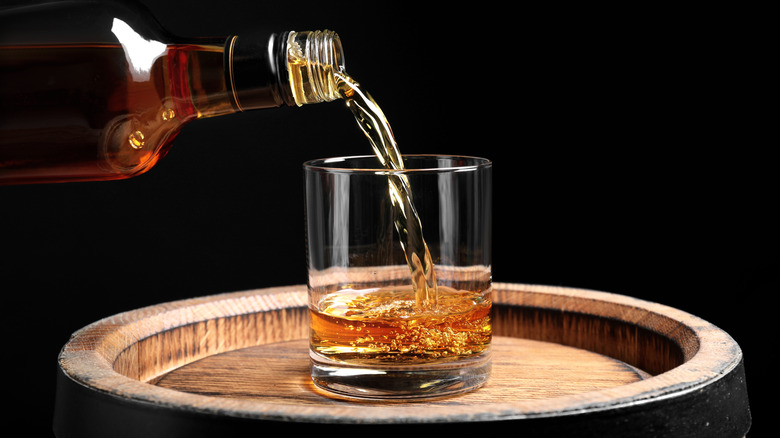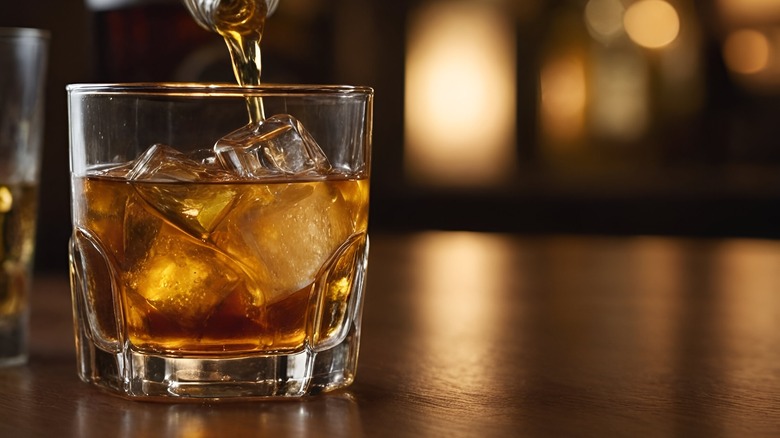What 'Cask Strength' Really Means For Your Bourbon
The term cask strength evokes, at least to me, the romanticized image of someone tapping a whiskey (or whisky) barrel and taking a sip drawn straight from it. That term, aside from having a sleek and leathery pirate-era sound to it, does have an actual meaning that's useful to know. That's because when you see the term "cask strength" on a bottle's label, this means that the whiskey contained therein is guaranteed to be pretty strong.
Typical mass-market whiskey you see is roughly 40% to 45% alcohol by volume (ABV) and has already been blended with a bit of water to bring its alcohol content down in order to create a consistent product across a brand. But the stuff marked cask strength or barrel proof will typically have an ABV starting at 50% — and can go up from there. It's named this way because that's the natural strength of the beverage when it's taken out of the aging barrel (or cask) when it's bottled, without any water added.
Why cask strength whiskeys can vary in strength
There are a lot of factors that determine a whiskey's final cask strength upon its bottling. During the aging process, its ABV can change as some of the liquid inside the barrel evaporates naturally, which is where you'll hear the term the angel's share come in. The angel's share is considered the portion that disappears as the whiskey naturally ages.
Cask strengths can vary due to multiple variables. Depending on the barrel's aging environment, a whiskey's water content can evaporate faster than the alcohol does, leaving you with a stronger end product (such as in a dry, hot location), or the opposite can occur, where the alcohol evaporates more rapidly, leaving a higher water content behind (such as in a cooler, more humid locale). That's why no two batches of cask-strength whiskeys, even created by the same distiller, aren't guaranteed to have the same uniformity in strength.
How to drink a cask strength whiskey
One challenge in drinking any spirit with a high ABV is that they are (obviously) very strong. That can get you intoxicated quickly, so pace yourselves, but it can also be hard on your taste buds, especially if you're trying to appreciate your whiskey. One of the advantages of a high or cask-strength whiskey is that you can add a splash of water or an ice cube or two to it, which will temper its strength to the point where you can appreciate it. Just add a touch at a time until you're at a comfortable level.
This isn't just to tame the alcohol content. Think about it less as watering it down and more like teasing out subtleties in the whiskey's concentrated flavors, which you might not have caught while drinking it at its most alcoholic rendition. You can also transform it into your favorite cocktail, in which case the nuances of your base spirit might change in favor of the sum of its total parts.
Plus, if you do add splashes of water to your cask-strength booze, you can stretch that bottle out a little longer anyway, which is a bonus. Might as well save a few bucks where you can. But keep in mind that the term cask strength is also one that brands lean on in terms of marketing because it connotes a purer, unadulterated product, but that's not a guarantee you'll necessarily like it. That being said, it's good to know what the term cask strength means on a whiskey's label because it helps you decode the jargon before you purchase it. And if it's not exactly your favorite, you can also feel free to tinker with it by creating your own whiskey blend at home.


